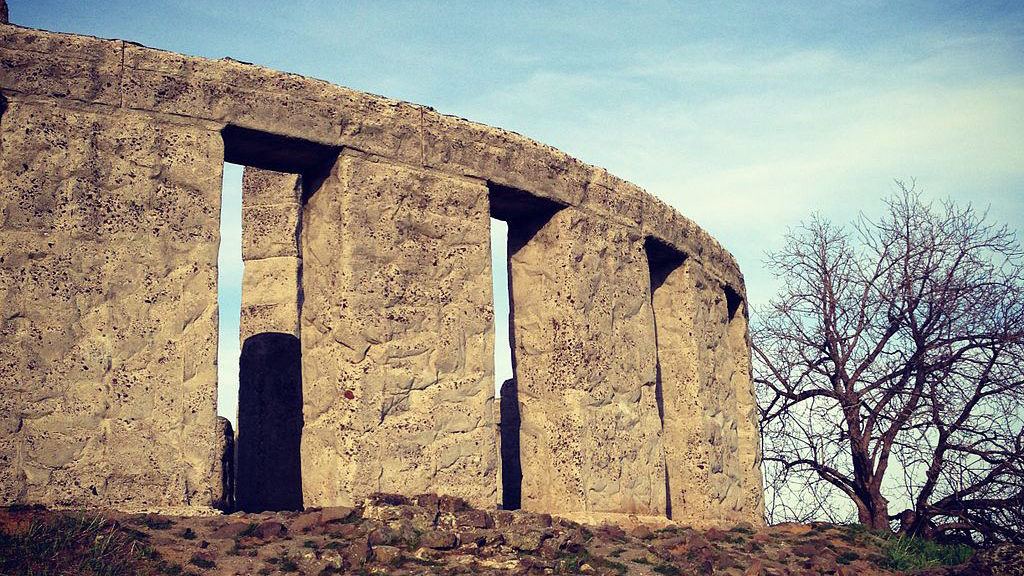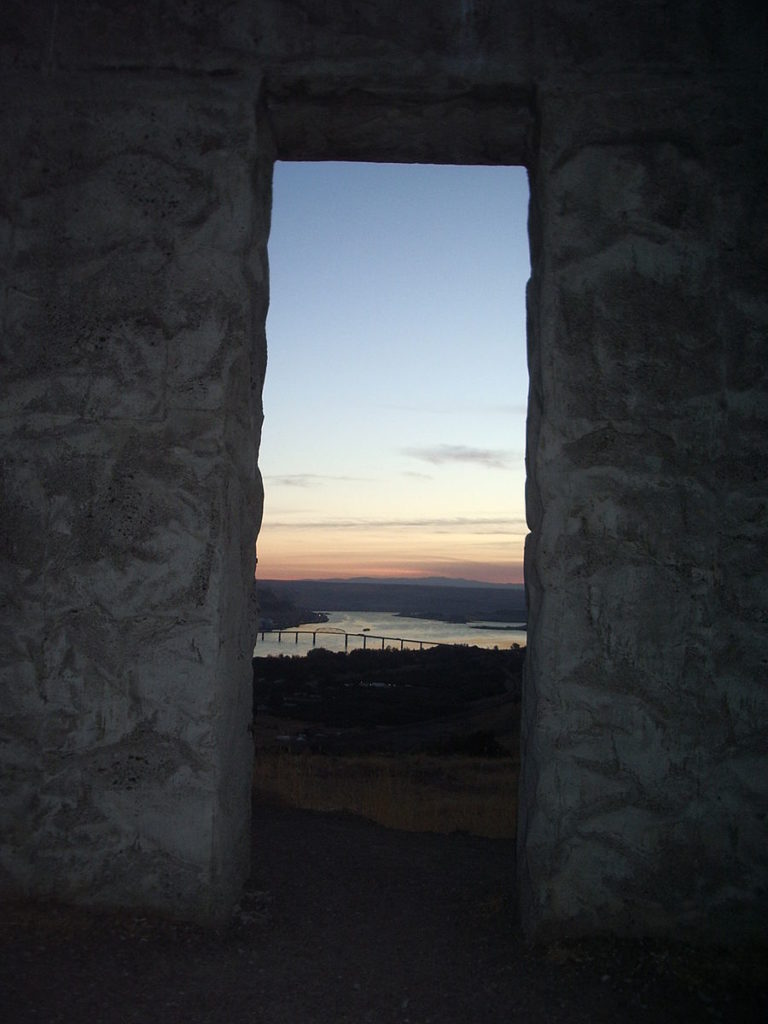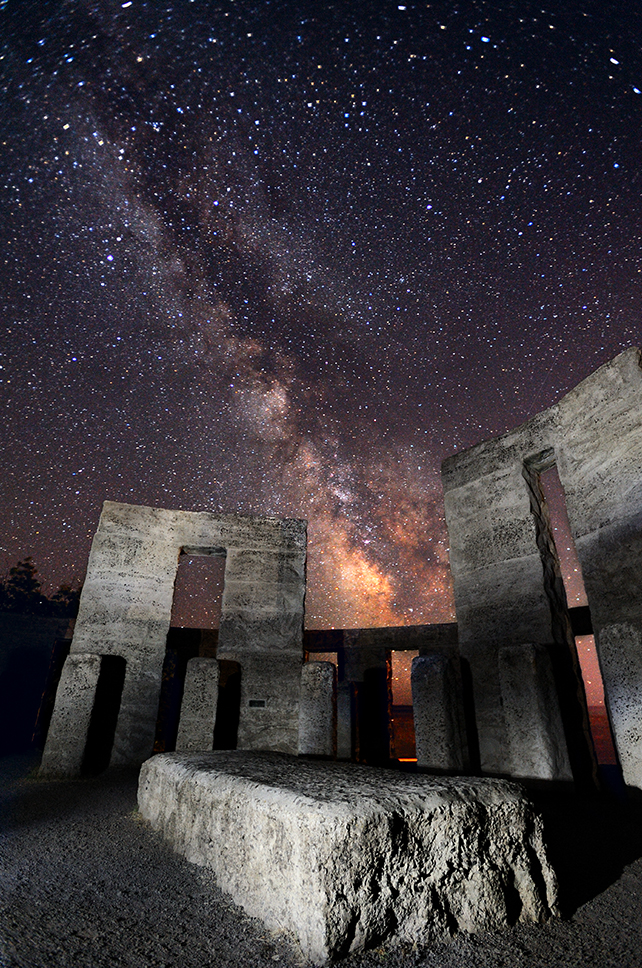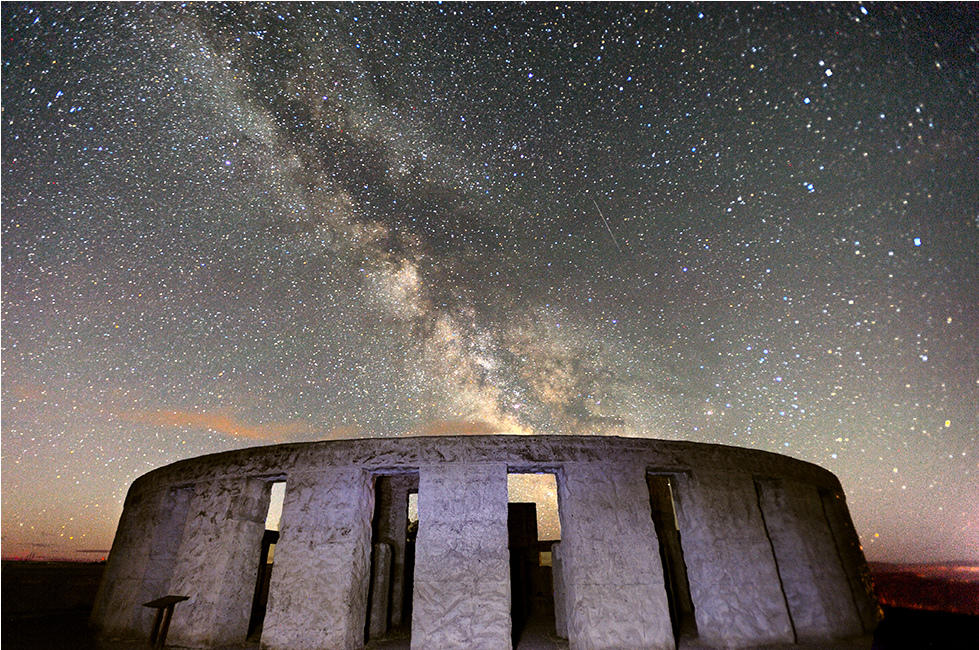
Stones cast long shadows
They paced the distance, built an earthen ring,
Split hard rock, pushed up each crushing stone,
And built a doorway for the rising sun
To enter when the Earth turned back to spring.—Emily Burns
I’m standing on a bluff getting pummeled by wind. The westward sun throws a spectacular gleam on the river below, a shiny ribbon threading through the gorge. Here on the precipice of the light half of the year, there’s a radiance to the waning daylight, as if the veil of winter has finally lifted.
Behind me, to the east, the standing stones stretch their shadows.
I follow the last streaming rays of daylight through a doorway, and I’m inside the stones. Stepping into their midst is like entering the embrace of a mountain. They encircle me like concentric rings of dancers waiting for the first note to strike. I feel as though I’m standing in the center of a neolithic clock whose cogs might start turning at any moment, each ticking in a different direction.

But these stones weren’t erected by prehistoric hands. They weren’t dragged from a quarry miles away in a mysterious feat of human ingenuity. They haven’t absorbed thousands of years’ worth of prayers, tears, awe, reverence and magic.
They were molded from concrete less than a hundred years ago. They were poured and cured and rebarred. And they are massive.
Built to scale, they throw a crisscross of shadows toward the central altar. This is what Stonehenge must have looked like when it was new. Before the crumbling set in. Before the stone ranks began to fall.
This sacred ground has a different flavor though. Planted 800 feet above the Columbia River, the stones seem less rooted here. Winds constantly gust through their gaps, stirring up perpetual motion as earth and air fight each other for dominance. Stillness is rare, here among the stones.
There are three of us. We weave between them like cats, exploring, absorbing, chasing our shadows. We bring offerings of wine and bread. We bring candles and incense and water scooped from a nearby lake, whose surface hides the underwater remains of a 3,500-year-old native village.
Earlier today we followed that lake down the Temani Pesh-wa (Written in Stone) trail. The path curves along a basalt shelf, whose face is populated with petroglyphs etched by hands thousands of years gone. Chunks of stone from a local canyon, propped up along its base, bear more images.
We walked past birds, snakes, mammals, insects, concentric circles and strange human-like shapes. At the end we met Tsagaglalal, She Who Watches. According to legend, the petroglyph depicts a chief who was turned into stone so she could watch over her people forever.
“Soon the world will change,” said Coyote, “and women will no longer be chiefs.” Then he changed her into a rock with the command, “You shall stay here and watch over the people who live here.
All the people know that Tsaglaglae sees all things, for whenever they are looking at her those large eyes are watching them.

As I stand in the center of Stonehenge, I imagine Tsagaglalal’s ancient eyes watching. What would she think, I wonder, of this strange transplant from another continent?
For me, it represents a startling blend of the Old World and the New. With ancestors from to both continents, I often feel like I’m straddling a cultural ocean. Here among the stones, a liminal place where ancient and modern meet and the four elements converge, I feel my two worlds coming together in a sort of sacred harmony.
We arrange our things on the flat stone altar, which is too wide to reach across and long enough for two of us to lie end-to-end with plenty of room to spare. We make do with a small corner.
We try to light quarter candles, but the wind isn’t having it. It swallows our incense smoke and snatches the words from our mouths. This place seems too vast for our little ritual, its shadows too deep. It would take a stronger presence than we’ve developed to command a space like this.
We muddle through, with many laughs and something like humility. Surrendering to the wind makes us giddy. We invoke the gods in the shadow of the standing stones. We trace our small circle within the henge’s larger one. We attempt to touch the spirit of a place so different from its British cousin, yet ancient and holy in its own right.
And maybe, just maybe, we reach through it and touch that other, older place.

Featured image by Steven Pavlov—Maryhill Stonehenge, CC-BY-SA-3.0